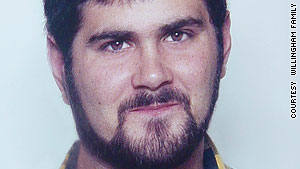FALSE CONFESSIONS ON THE RISE : A Well Thought Out Scream by James Riordan

False confessions induced by interrogators are among the leading causes of wrongful imprisonment in the United States, research shows. During hours-long, emotionally stressful interrogations, authorities have coerced, intentionally or not, innocent people to admit to crimes.
The problem in many cases is the adversarial nature of the legal system. The presumption is that if one person (the prosecutor) argues intensely that a suspect is guilty while another person (the defense attorney) argues intensely that the subject is innocent, the truth will somehow be found. Of course, if the prosecutor or the defense attorney is incompetent they the presumption break down. If the defense attorney is a wearly, over[worked public defender with very little time to devote to his client the presumption becomes almost ludicrous. It is no secret that a poor man who must rely on a public defender does not have an equal chance to the wealthy man who can hire the best lawyer in town. Sometimes prosecutors feel their job is to seek a conviction rather than justice. And sometimes the police feel that their job is to help the prosecutor obtain that conviction. And sometimes they get carried away.
Police-induced false confessions are among the leading causes of wrongful convictions and since the late 1980s, six studies alone have documented approximately 250 interrogation-induced false confessions. In Bedau and Radelet’s 1987 study, false confessions were the third leading cause of wrongful conviction; In Warden’s 2003 study they were the single leading cause.
 This is relatively easy to explain. The worse the charge, the more pressure is put on the police to capture the perpetrator. Police-induced false confessions occur primarily in the more serious cases, especially homicides and other high-profile felonies. More than 80 percent of the 125 false confessions documented by Professors Steve Drizin and Richard Leo occurred in homicide cases. In fact, false confessions make for the leading cause of wrongful convictions in homicide cases.
This is relatively easy to explain. The worse the charge, the more pressure is put on the police to capture the perpetrator. Police-induced false confessions occur primarily in the more serious cases, especially homicides and other high-profile felonies. More than 80 percent of the 125 false confessions documented by Professors Steve Drizin and Richard Leo occurred in homicide cases. In fact, false confessions make for the leading cause of wrongful convictions in homicide cases.
There have been 317 post-conviction DNA exonerations in the United States and more than two-thirds of the DNA-cleared homicide cases documented by the Innocence Project were caused by false confessions.
In New York here have been 43 wrongful confessions. New York outpaces almost every other state in the number of wrongful convictions overturned by DNA testing. From the years 2000 to 2007 there were a particularly high number of DNA exonerations in New York State – seventeen wrongfully convicted people there have been exonerated with DNA evidence and seven of the seventeen were wrongfully convicted of murder.
But the same thing is happening across the entire country. In 2013, 72% of the 1,281 exonerated from January 1989 through December 2013 were cleared without DNA evidence and 20% of the 1,281 exonerees had a false confession as a contributing factor.
What makes things worse is that juries tend accept a confession as proof of guilt without questioning how that confession was obtained. Studies of proven false confessors have shown that, even in cases involving confessions later proven to be false, juries convict in 73-81% of the cases
Of course, when an innocent person is convicted of a crime that means the guilty person is still free to commit more crimes. In nine of 10 cases, the actual perpetrators of crimes for which innocent people were wrongfully convicted went on to commit additional crimes while an innocent person was in prison. In New York eleven cases where people falsely confessed or admitted to crimes that DNA later proved they did not commit, led to five murders, seven rapes, two serious assaults and one robbery at gunpoint that were committed by the actual perpetrators of crimes after which these innocent people were committed.
Another sad statistic is that a false confession tends to influence witnesses, even eye-witnesses. Eyewitness misidentification played a role in 13 of the 23 wrongful convictions in New York that were overturned with DNA testing.
How Do False Confessions Happen
Law enforcement errors that lead to false confessions include relentlessly pursuing a suspect as guilty without proper evidence, coercing a suspect to confess under immense pressure and contaminating a suspect’s perspective by feeding him or her facts about the crime that only the actual perpetrator would know. Such tactics can cause an innocent suspect to admit to a crime in order to escape the long, harsh interrogation process, according to a 2009 white paper on police-coerced confessions. At times, innocent suspects’ respect for law enforcement has led to their belief in the authority’s narrative, whether or not it is factual.
 It seems unfathomable that someone would admit to committing a crime that they had nothing to do with. But in more than 25 percent of the exonerations proven by DNA, that is exactly what happened. It’s nearly impossible to imagine an innocent person confessing to homicide. Especially in a state that institutes the death penalty. Why on earth would a person — a wholly innocent person — not just hold his ground and refuse to confess? That failure of imagination turns into outright skepticism when a false confessor insists upon his innocence at trial. The line of reasoning varies but the conclusions are the same. A variation on the argument above goes, “Since no innocent person would risk his life by confessing falsely, then he must be guilty. If not of this crime, then another.” Alternatively, “Well, if he did lie to interrogators, then he’s an admitted liar, so why should I believe his latest story?”
It seems unfathomable that someone would admit to committing a crime that they had nothing to do with. But in more than 25 percent of the exonerations proven by DNA, that is exactly what happened. It’s nearly impossible to imagine an innocent person confessing to homicide. Especially in a state that institutes the death penalty. Why on earth would a person — a wholly innocent person — not just hold his ground and refuse to confess? That failure of imagination turns into outright skepticism when a false confessor insists upon his innocence at trial. The line of reasoning varies but the conclusions are the same. A variation on the argument above goes, “Since no innocent person would risk his life by confessing falsely, then he must be guilty. If not of this crime, then another.” Alternatively, “Well, if he did lie to interrogators, then he’s an admitted liar, so why should I believe his latest story?”
The underlying premise is one of a prosecutor’s greatest assets: innocent people don’t confess falsely. Juries are so deeply persuaded by confessions that, in some instances, they convict in the face of DNA evidence that excludes the suspect. The powerful and irreversible nature of the false confessions is the single best reason for interrogation reform and elimination of the death penalty.
The reasons that people falsely confess are complex and varied, but what they tend to have in common is a belief that complying with the police by saying that they committed the crime in question will be more beneficial than continuing to maintain their innocence.
Confessions obtained from juveniles are often unreliable — children can be easy to manipulate and are not always fully aware of their situation. People with mental disabilities have often falsely confessed because they are tempted to accommodate and agree with authority figures. Also, many law enforcement interrogators are not given any special training on questioning suspects with mental disabilities. An impaired mental state due to mental illness, drugs or alcohol may also elicit false admissions of guilt.
But mentally capable adults also give false confessions due to a variety of factors like the length of interrogation, exhaustion or a belief that they can be released after confessing and prove their innocence later. Illinois alone has wrongfully convicted 25 innocent people of homicide on the basis of false confessions. Understanding the conditions that give rise to false confessions will help prevent a phenomenon that not only implicates innocent people but also expends tremendous resources that could be devoted to apprehending the responsible actors.
 Brandon Garrett, a University of Virginia Law Professor and author of the book Convicting the Innocent: Where Criminal Prosecutions Go Wrong, examined 250 of the first DNA exonerations — convictions of innocent people overturned as a result of newly introduced DNA evidence. Garrett found that 40 had falsely confessed to the crimes. Of those 40: 14 were mentally disabled or borderline mentally disabled, and three more (at least) were mentally ill. Thirteen of the 40 were juveniles. All but four were interrogated for more than three hours at a sitting. Seven described their involvement in the crime as coming to them in a ‘dream’ or ‘vision.’ Seven were told they had failed polygraph tests… [A]ll of them waived their Miranda rights.
Brandon Garrett, a University of Virginia Law Professor and author of the book Convicting the Innocent: Where Criminal Prosecutions Go Wrong, examined 250 of the first DNA exonerations — convictions of innocent people overturned as a result of newly introduced DNA evidence. Garrett found that 40 had falsely confessed to the crimes. Of those 40: 14 were mentally disabled or borderline mentally disabled, and three more (at least) were mentally ill. Thirteen of the 40 were juveniles. All but four were interrogated for more than three hours at a sitting. Seven described their involvement in the crime as coming to them in a ‘dream’ or ‘vision.’ Seven were told they had failed polygraph tests… [A]ll of them waived their Miranda rights.
False confessions share a number of common traits:
- The interrogations are only partially recorded or not recorded at all.
- The confessions contain explicit details that only the killer would know, details which are leaked to the suspects, and which eviscerate the suspect’s credibility with a jury.
- Interrogators threaten the suspects with the death penalty or other harsh penalties.
- The suspects are young or mentally incapacitated, or both.
- The suspects waive their Miranda rights.
Many of the above issues can be avoided through the adoption of two policies: abolition of the death penalty and recording of custodial interrogations. In response to an appalling history of wrongful convictions, Illinois has adopted both policies. And we must protect them.
By abolishing the death penalty, Illinois eliminated one of the key motivators of false confessions. As defense attorney Danny Shipley stated in the PBS film The Confessions, “When you approach the case… death changes everything. All your decisions that you make are guided by the fact that if you make the wrong decision, your client’s dead.” After Quinn signed the bill into law, Peoria prosecutor Kevin Lyons acknowledged, “(The repeal) takes away a very strong tool from the box of prosecutors, and that is leverage.” Illinois Republicans have already introduced a bill to reinstate the death penalty.
In 2002, Illinois adopted the Illinois Criminal Justice Information Act, the first law of its kind requiring electronic recording of interrogations in homicide investigations. These recordings benefit not just the suspect, but also police and prosecutors. A report from Northwestern University Law School’s Center on Wrongful Convictions, Police Experiences with Recording Custodial Interrogations(pdf), found that police and prosecutors are uniformly pleased with recording. After all, recordings can catch guilty suspects when they change their story or reveal disregard for their victims’ lives. And recordings avoid costly disputes about officer behavior. Considering these reports, and the falling costs of digital recording and storage, we ought to record interrogations for all such “major” crimes — including sexual assault, armed robbery, domestic violence, and child abuse.
 False confessions may defy belief, but they do occur — typically in cases with the most vulnerable suspects. These confessions have grave consequences and great costs to society and taxpayers. All states and police departments should follow Illinois’ lead in identifying and implementing policies to prevent this unique form of injustice. And Illinois must protect and improve upon its policies already in place.
False confessions may defy belief, but they do occur — typically in cases with the most vulnerable suspects. These confessions have grave consequences and great costs to society and taxpayers. All states and police departments should follow Illinois’ lead in identifying and implementing policies to prevent this unique form of injustice. And Illinois must protect and improve upon its policies already in place.
The factors that can contribute to a false confession during a police interrogation include:
- duress
- coercion
- intoxication
- diminished capacity
- mental impairment
- ignorance of the law
- fear of violence
- the actual infliction of harm
- the threat of a harsh sentence
- misunderstanding the situation
FROM THREATS TO TORTURE
Sometimes law enforcement use harsh interrogation tactics with uncooperative suspects. But some police officers, convinced of a suspect’s guilt, occasionally use tactics so persuasive that an innocent person feels compelled to confess.For instance, it is perfectly legal for law enforcement to employ deception or trickery in the interrogation room. Some suspects are untruthfully told that there is already evidence pointing to their guilt, such as a forensic test that links the suspect to the crime. Some suspects have confessed to avoid physical harm or discomfort. Others are told they will be convicted with or without a confession and that their sentence will be more lenient if they confess. Some are told a confession is the only way to avoid the death penalty. These tactics can be persuasive in eliciting a false confession.
Any good criminal-defense attorney will tell you to say four words if you are about to be arrested for murder: I want a lawyer.
This is simple advice and should be easy to remember during an interrogation, but not everyone recalls it under the pressure of police questioning. Some people make matters worse for themselves in the face of strong evidence by providing an alibi or identifying another person as the perpetrator. Many succumb to the wiles of homicide detectives and implicate themselves to some lesser degree in the crime, heeding the admonition that a partial loss is better than going down for the whole thing. Some accused people are tricked into confessing, and some confess to crimes they did not commit. A certain percentage, worn down by conscience or questioning or the simple desire to get the interrogation over with, provide a detailed and honest explanation for what they did.
The number of false confessions have greatly increased since a method called the Reid Technique was adopted by police departments across the world. The Reid technique’s nine steps of interrogation are:
- Step 1 – Direct confrontation. Advise the subject that the evidence has led the police to the individual as a suspect. Offer the person an early opportunity to explain why the offense took place.
- Step 2 – Try to shift the blame away from the suspect to some other person or set of circumstances that prompted the suspect to commit the crime. That is, develop themes containing reasons that will psychologically justify or excuse the crime. Themes may be developed or changed to find one to which the accused is most responsive.
- Step 3 – Try to discourage the suspect from denying his or her guilt. Reid training video: “If you’ve let him talk and say the words ‘I didn’t do it’[…]the more difficult it is to get a confession.”[citation needed]
- Step 4 – At this point, the accused will often give a reason why he or she did not or could not commit the crime. Try to use this to move towards the confession.
- Step 5 – Reinforce sincerity to ensure that the suspect is receptive.
- Step 6 – The suspect will become quieter and listen. Move the theme discussion towards offering alternatives. If the suspect cries at this point, infer guilt.
- Step 7 – Pose the “alternative question”, giving two choices for what happened; one more socially acceptable than the other. The suspect is expected to choose the easier option but whichever alternative the suspect chooses, guilt is admitted. There is always a third option which is to maintain that they did not commit the crime.
- Step 8 – Lead the suspect to repeat the admission of guilt in front of witnesses and develop corroborating information to establish the validity of the confession.
- Step 9 – Document the suspect’s admission or confession and have him or her prepare a recorded statement (audio, video or written).
 Critics of the technique claim it too easily produces false confessions, especially with children. The use of the Reid technique on youth is prohibited in several European countries because of the incidence of false confessions and wrongful convictions that result. On the other hand, in recent cases it should be noted that the courts have admonished the investigators for not following the guidelines and safeguards that the Reid Technique employs to protect the juvenile or mentally impaired individual from making a coerced or false confession – US v. Preston F.3d, 2014 WL 1876269 (C.A.9 (Ariz.) and People v. Elias 2015 WL 3561620.)
Critics of the technique claim it too easily produces false confessions, especially with children. The use of the Reid technique on youth is prohibited in several European countries because of the incidence of false confessions and wrongful convictions that result. On the other hand, in recent cases it should be noted that the courts have admonished the investigators for not following the guidelines and safeguards that the Reid Technique employs to protect the juvenile or mentally impaired individual from making a coerced or false confession – US v. Preston F.3d, 2014 WL 1876269 (C.A.9 (Ariz.) and People v. Elias 2015 WL 3561620.)
In Canada, a Provincial Court judge ruled in 2012 that “stripped to its bare essentials, the Reid Technique is a guilt-presumptive, confrontational, psychologically manipulative procedure whose purpose is to extract a confession.” John E. Reid and Associates maintains that “it’s not the technique that causes false or coerced confessions but police detectives who apply improper interrogation procedures.” On the other hand, the Canadian Supreme Court has ruled that several of the core elements of the Reid Technique are in complete compliance with legal practices: “There is nothing problematic or objection-able about police, when questioning suspects, in downplaying or minimizing the moral culpability of their alleged criminal activity. I find there was nothing improper in these and other similar transcript examples where [the detective] minimized [the accused’s] moral responsibility.”R. v. Oickle, [2000] 2 S.C.R. 3. It was discovered in December 2013 that an unredacted copy of the Federal Bureau of Investigation interrogation manual had been impermissibly placed in the Library of Congress and was available for public view. The manual confirmed American Civil Liberties Union concerns that the agency used the Reid technique.
In 2015, eight organizations, including John E. Reid & Associates settled with Juan Rivera, a Waukegan, Illinois man who was wrongfully convicted of the 1992 rape and murder of 11-year-old Holly Staker. A number of pieces of evidence excluded Rivera, including DNA from the rape kit and the report from the electronic ankle monitor he was wearing at the time while awaiting trial for a non-violent burglary. However, he confessed after being interrogated for several days. Rivera was taken to Reid headquarters in Chicago twice during the investigation for polygraph tests, which indicated deception regarding his alibi. After his exoneration, Rivera filed a suit for false arrest and malicious prosecution. The case was settled out of court with John E. Reid & Associates paying $2 million.
The Reid Technique consists of a three-phase process beginning with Fact Analysis, followed by the Behavior Analysis Interview (which is a non-accusatory interview designed to develop investigative and behavioral information), followed by, when appropriate, the Reid Nine Steps of Interrogation. In the Reid technique, interrogation is an accusatory process in which the investigator tells the suspect that there is no doubt as to his or her guilt. The interrogation is in the form of a monologue presented by the investigator rather than a question and answer format. The demeanor of the investigator during the course of an interrogation is ideally understanding, patient, and non-demeaning. His or her goal is to make the suspect progressively more and more comfortable with acknowledging the presumed truth about what he or she is alleged to have done. This is accomplished by the investigators’ first imagining and then offering the subject various psychological constructs as justification for their behavior.
For example, an admission of guilt might be prompted by the question, “Did you plan this out or did it just happen on the spur of the moment?” This technique uses a loaded question that contains the unspoken, implicit assumption of guilt. The idea is that the person under interrogation must catch the hidden assumption and contest it to avoid the trap. Critics regard this strategy as hazardous, arguing that it is subject to confirmation bias (likely to reinforce inaccurate beliefs or assumptions) and may lead to prematurely narrowing an investigation.
Other things that can lead to a false confession is that details of the crime are inadvertently communicated to a suspect by police during questioning. Later, when a suspect knows these details, the police take the knowledge as evidence of guilt. Often, threats or promises are made to the suspect off camera and then the camera is turned on, resulting in a false confession. Without an objective record of the entire custodial interrogation, it is difficult to gauge the reliability of the confession. Feeding the suspect misinformation, can create confusion and lead people to doubt their own beliefs, at times internalizing guilt and confabulating memories for crimes they did not commit (Kassin, 2007; for a more general review of the misinformation effect, see Loftus, 2005).
The 1989 case of 17-year-old Marty Tankleff, who was wrongly convicted for the murder of his parents, illustrates the point. During a five-plus hour interrogation, the lead detective outright lied to Tankleff about the evidence— e.g., claiming that his hair was found in his mother’s grasp and that his father, who was in a coma, regained consciousness and identified his son as the attacker. By citing the most trusted source in his life, police led Tankleff to wonder if he had blacked out and murdered his parents, ultimately leading him to question his own innocence. On the basis of a confession he gave but quickly retracted, Tankleff was convicted. Nineteen years later, his conviction was overturned and all charges were dismissed (Firstman & Salpeter, 2008). In addition to the dispositional and situational factors that can increase one’s vulnerability to false confession, Kassin (2005) suggested the paradoxical hypothesis that innocence itself may put innocent people at risk to confess. Research shows that innocent people who stand accused believe that their innocence will become apparent to others, a naive belief that leads them to waive their Miranda rights to silence and to an attorney (Kassin & Norwick, 2004), and their right to a lineup (Holland, Kassin, & Wells, 2005), behave in ways that are forthcoming and cooperative in their interviews with police (Hartwig, Granhag, Stro¨mwall, & Kronkvist, 2006; Hartwig, Granhag, Stromwall, & Vrij, 2005), and exhibit less physiological arousal on critical items of a concealed information test even when they are pre-informed about the crime (Zvi, Nachson, & Elaad, 2010).
Ironically, laboratory research suggests that mock interrogators who presume a suspect guilty conduct particularly pressure-filled interrogations when paired with mock suspects who are truly innocent and adamant in their denials (Kassin, Goldstein, & Savitsky, 2003). If innocence as a state of mind leads people to trust the criminal justice system, then interrogation techniques designed to buffer innocent suspects may not have the intended effect. In particular, consider the bluff technique, a common and less deceptive alternative to the false evidence ploy. In using the bluff, interrogators pretend to have evidence without additionally asserting that this evidence necessarily implicates the suspect (e.g., stating that witnesses were present and will be interviewed; or that blood, hair, or other biological evidence was collected and sent to a laboratory for testing). Some interrogation manuals specifically recommend using case files, dossiers, and other visual aids as a means of bolstering the bluff (e.g., Inbau et al., 2001; Zulawski & Wicklander, 2002).
In principle, the bluff should produce diagnostic outc omes by threatening the actual perpetrator with certain detection, increasing the incentive to cooperate and confess (as with the presentation of strong evidence discussed earlier; see Moston et al., 1992). Yet innocent suspects should not feel similarly threatened by the future evidence implied by the bluff. Knowing that they have left no trail of incriminating evidence, they should not fear being implicated and, hence, should not confess as a way to cut anticipated losses. Indeed, as Inbau et al. (2001) put it: ‘‘Merely introducing fictitious evidence during an interrogation would not cause an innocent person to confess. It is absurd to believe that a suspect who knows he did not commit a crime would place greater weight and credibility on alleged evidence than his own knowledge of his innocence’’ (p. 429). The hypothesis that the bluff technique should elicit confessions from perpetrators but not from innocents makes intuitive sense. Based on actual case anecdotes, however, Kassin (2005) suggested the contrary hypothesis that to an innocent suspect under interrogation, the ‘‘threat’’ of proof implied by the bluff represents a ‘‘promise’’ of future exoneration, paradoxically making it easier to confess. In a case that illustrates how the phenomenology of innocence can wreck havoc on a suspect’s decision making, Todd Johnson, who was ultimately acquitted, had Law Hum Behav 123 confessed to his wife’s murder after 19 h of interrogation when police said that they found blood in his car to be sent to a laboratory for DNA testing. Knowing that the blood could not be his wife’s, this defendant explained later that he confessed because he was exhausted and knew that the test results would show his innocence (Missouri v. Johnson, 2001). This logic was also revealed in the case of Jeffrey Deskovic. During a six hour interrogation, police asserted that they had collected DNA at the rape and murder scene for testing. At that point, despite—or because of—his innocence, Deskovic confessed and was later convicted. After his exoneration, he explained why he confessed: ‘‘Believing in the criminal justice system and being fearful for myself, I told them what they wanted to hear.’’ Knowing that the DNA testing would show his innocence, he said, ‘‘I thought it was all going to be O.K. in the end’’ (Santos, 2006). Interestingly, there was DNA evidence in this case and the test did exclude Deskovic. He was tried anyway, however, and convicted by a jury. Sixteen years later, he was released when the DNA was matched to the actual perpetrator.
omes by threatening the actual perpetrator with certain detection, increasing the incentive to cooperate and confess (as with the presentation of strong evidence discussed earlier; see Moston et al., 1992). Yet innocent suspects should not feel similarly threatened by the future evidence implied by the bluff. Knowing that they have left no trail of incriminating evidence, they should not fear being implicated and, hence, should not confess as a way to cut anticipated losses. Indeed, as Inbau et al. (2001) put it: ‘‘Merely introducing fictitious evidence during an interrogation would not cause an innocent person to confess. It is absurd to believe that a suspect who knows he did not commit a crime would place greater weight and credibility on alleged evidence than his own knowledge of his innocence’’ (p. 429). The hypothesis that the bluff technique should elicit confessions from perpetrators but not from innocents makes intuitive sense. Based on actual case anecdotes, however, Kassin (2005) suggested the contrary hypothesis that to an innocent suspect under interrogation, the ‘‘threat’’ of proof implied by the bluff represents a ‘‘promise’’ of future exoneration, paradoxically making it easier to confess. In a case that illustrates how the phenomenology of innocence can wreck havoc on a suspect’s decision making, Todd Johnson, who was ultimately acquitted, had Law Hum Behav 123 confessed to his wife’s murder after 19 h of interrogation when police said that they found blood in his car to be sent to a laboratory for DNA testing. Knowing that the blood could not be his wife’s, this defendant explained later that he confessed because he was exhausted and knew that the test results would show his innocence (Missouri v. Johnson, 2001). This logic was also revealed in the case of Jeffrey Deskovic. During a six hour interrogation, police asserted that they had collected DNA at the rape and murder scene for testing. At that point, despite—or because of—his innocence, Deskovic confessed and was later convicted. After his exoneration, he explained why he confessed: ‘‘Believing in the criminal justice system and being fearful for myself, I told them what they wanted to hear.’’ Knowing that the DNA testing would show his innocence, he said, ‘‘I thought it was all going to be O.K. in the end’’ (Santos, 2006). Interestingly, there was DNA evidence in this case and the test did exclude Deskovic. He was tried anyway, however, and convicted by a jury. Sixteen years later, he was released when the DNA was matched to the actual perpetrator.
These stories raise two important points about the bluff as an interrogation tool. First, it need not make suspects feel pressured or trapped, or alter their beliefs and memories, to elicit a confession. Rather, innocent people may ‘‘voluntarily’’ decide to confess out of a misplaced confidence that their admission will later be disproved. Second, it should not matter whether the police cite future evidence as a tactical bluff or as a truthful matter of fact. To the extent that an innocent suspect harbors the hope of future exoneration, the net effect may be the same: to increase the risk of confession. The research reported in this article presents the first empirical examination of the bluff tactic on confessions. Using the computer crash paradigm described earlier, a first study was designed with three goals in mind: (1) to investigate for the first time the effect of the bluff tactic on compliant and internalized false confessions, (2) to compare the bluff to the false evidence ploy, and (3) to determine whether the presence of a witness who affirms the participant’s denial protects that participant against false confessions.
Another questioning technique that can lead to false confessions is the use of threats and promises. A review of the available information in false confession cases has revealed that in many of the interrogations the investigators engaged in the use of impermissible threats and promises. Interrogators in these cases have made such statements as: “You’re not leaving this room until you confess.” “If you tell me you did this you can go home and sleep in your own bed tonight (when such is not the case).” “You will be sentenced to the maximum term unless you confess.” “With the evidence that we have, there’s no doubt that you will be convicted of this. The only question is how long you are going to sit in jail.” “If you don’t tell the truth I will get your children turned over to protective services and you’ll never see them again.” “The other guys want to charge you with 1st degree murder but if you tell me it was just manslaughter nothing bad will happen to you.”
It goes without saying that in the questioning of a criminal suspect no professional interrogator should engage in any illegal interrogation practices, including any threats, promises of leniency or the exercise of any physically abusive tactics. Furthermore, the rights of the suspect should be scrupulously respected. Theme Development It has been suggested by some that the interrogator’s effort to develop a theme during the interrogation is not just offering the suspect a moral excuse for his criminal behavior, but is actually offering the suspect a promise of reduced punishment. Here are a few quotes from Criminal Interrogation and Confessions (4th edition, 2001 Inbau, Reid, Buckley and Jayne) • “During the presentation of any theme based upon the morality factor, caution must be taken to avoid any indication that the minimization of the moral blame will relieve the suspect of criminal responsibility.” (p.93) 3 • “As earlier stated, the interrogator must avoid any expressed or intentionally implied statement to the effect that because of the minimized seriousness of the offense, the suspect is to receive a lighter punishment.” (p.100) • “In applying this technique of condemning the accomplice, the interrogator must proceed cautiously and must refrain from making any comments to the effect that the blame cast on an accomplice thereby relieves the suspect of legal responsibility for his part in the commission of the offense.” (p. 114) Excerpt from The Investigator Anthology 2000 Jayne and Buckley • “During theme development, caution must be exercised, however, not to tell the suspect that if the crime was committed for a morally acceptable reason that the suspect will be accorded leniency.” (p. 414) Alternative Questions In The Reid Technique the alternative question should never threaten consequences or offer promises of leniency.
The following are improper alternative question examples: “Do you want to cooperate with me and tell me what happened, or spend the next five to seven years behind bars?” (improper) “Do you want to be charged with first degree murder, which will mean life in prison, or was this just manslaughter?” (improper) “Are you going to get this straightened out today, or do you want to spend a few days in jail to think about it?” (improper) There has been the suggestion by some critics of police interrogation techniques that the alternative question – “Was this your idea or did your buddies talk you into it?” is potentially dangerous because it only offers a suspect (including an innocent one) only two choices, both of which amount to an admission of guilt. Obviously the third choice is for the suspect to deny any participation in the commission of the crime that is under investigation. However, there is an additional issue raised by some critics about the alternative question – namely, that saying “Was this your idea or did your buddies talk you into it” is essentially the same as saying “If this was your idea you are going to spend time in jail, but if your buddies came up with the idea you won’t have any problems.” This theory is called “pragmatic implication” and was developed from a research study in which college students read various transcripts of interrogations and then speculated on the type of punishment the suspects would 4 receive based on the interrogation process used. Specifically, the students theorized that when the interrogator suggested in a murder case interrogation that the victim may have done or said something to have provoked the suspect, that he would receive the same punishment as in those interrogations in which the suspect was directly offered a promise of leniency that if he confessed he would receive less punishment. The courts have rejected the idea that a confession is inadmissible if a suspect confesses because he harbors some internal hope that his confession may lead to a lesser sentence.
 In a well known case in my community a young father was charged with sexually abusing and murdering his three year old daughter. After being questioned for thirteen house without food and repeatedly threatened with police officers screaming things like, “If you don’t admit this right now, I’m putting you in jail where I have several friends on the inside who will rape you repeatedly.” The man confessed and spent eight months in jail. During this time the police refused to run a DNA test saying they were confident they had their man. When his lawyer went around them and got a DNA test, it matched up with a convicted sex offended who then admitted he did the crime. The poor father had been virtually tortured by the police while he was still under the heavy grief of losing his child. Later, the courts awarded him several million dollars, but there are still many people around my town who think he committed the crime because “Why else would he confess.” If you get anything out of reading this article please understand the reality of false confessions.
In a well known case in my community a young father was charged with sexually abusing and murdering his three year old daughter. After being questioned for thirteen house without food and repeatedly threatened with police officers screaming things like, “If you don’t admit this right now, I’m putting you in jail where I have several friends on the inside who will rape you repeatedly.” The man confessed and spent eight months in jail. During this time the police refused to run a DNA test saying they were confident they had their man. When his lawyer went around them and got a DNA test, it matched up with a convicted sex offended who then admitted he did the crime. The poor father had been virtually tortured by the police while he was still under the heavy grief of losing his child. Later, the courts awarded him several million dollars, but there are still many people around my town who think he committed the crime because “Why else would he confess.” If you get anything out of reading this article please understand the reality of false confessions.
SOLUTIONS
Mandatory Recording Of Interrogations
The electronic recording of interrogations, from beginning to end, is the single best reform available to prevent wrongful convictions caused by false confessions. This record will improve the credibility and reliability of authentic confessions, while protecting the rights of innocent suspects.
In some false confession cases, details of the crime are inadvertently communicated to a suspect by police during questioning. Later, when a suspect knows these details, the police take the knowledge as evidence of guilt. Often, threats or promises are made to the suspect off camera and then the camera is turned on, resulting in a false confession. Without an objective record of the entire custodial interrogation, it is difficult to gauge the reliability of the confession.
For law enforcement agencies, recording interrogations can prevent disputes about how a suspect was treated, create a clear record of a suspect’s statements and increase public confidence in the criminal justice system. Recording interrogations can also deter officers from using illegal or devious tactics to secure a confession.
In many cases, interrogations during which false confessions were extracted were not recorded or only partially recorded, preventing a judge or jury from understanding how an innocent suspect could describe in a confession details of a crime not yet made public.
The courts, Drizin suggested, “need to be able to see the entire interrogation process.” Only about 20 states require interrogations to be electronically recorded in their entirety.
“I think that courts need to be clearer with regard to what is and is not an acceptable level of coercion,” Drizin added. “Without clear guidelines, law enforcement officers continue to push the envelope in interrogations.”
Law requires that a confession from a suspect must to be corroborated by independent evidence. But Drizin notes, “Jurors still find that confession evidence is as persuasive as or even more persuasive than DNA evidence.”
Accountability
 Advocates argue that until law enforcement is held accountable, false confessions will continue. The only way law enforcement has been penalized, is after the fact, in civil suits filed by the exonerated,” Drizin said.
Advocates argue that until law enforcement is held accountable, false confessions will continue. The only way law enforcement has been penalized, is after the fact, in civil suits filed by the exonerated,” Drizin said.
In January, New York State settled a wrongful conviction case with defendant Marty Tankleff for more than $3 million. Tankleff, who served 17 years in prison for the murder of his parents, was found guilty based on a false confession he gave after law enforcement lied about a statement from his unconscious father (who died shortly after).
But even though New York settled, the police officers and prosecutors responsible for coercing Tankleff were not penalized. “The officers who obtained false confessions end up being promoted through the ranks, because false confessions increase clearance rates and convictions rates,” Drizin said.
PROVEN SUCCESS
More than 20 states, from North Carolina to Massachusetts to Illinois, require the recording of custodial interrogations through law or court action. More than a thousand additional law enforcement agencies voluntarily record interrogations. A 2004 study conducted by the Center on Wrongful Convictions of more than 200 locations that implemented this reform found that police departments overwhelmingly embrace the measure as good law enforcement practice whose time has come. Proactive policies like these have been adopted because the practice benefits police and prosecutors as well as innocent suspects.
___




1 Comment
Trial by Combat – Why the Courts Do Not and Cannot Work
In the Middle Ages disputes were often decided through Trial By combat – Man to Man Physical Combat Ordeals that supposedly allowed God to reveal his judgment by granting victory to the righteous.
Think this is just the stuff of primitive medieval superstition? Think Again.
Our courts are based on the adversarial system with both sides assaulting each other with the outcome supposedly resulting in justice. In truth, the ONLY thing that has changed since the Middle Ages is today’s assaults use words and documents instead of swords; but the principle and, I daresay, superstition remains the same.
Now, for those tempted to say using words instead of swords represents an improvement; let me point out that at least in the Middle Ages there was some semblance of fairness. At that time both parties had to be similarly armored and armed so at least they started out even in terms of resources.
That basic tenet of fairness is woefully lacking in today’s so-called civilized court based combat. But, since document and argument based forums make it difficult to see the contemporary unfairness, let’s move our analysis to the Middle Ages where we can more easily see the problem.
Imagine if one Middle Age warrior was only able to bring a sword and fight alone while the other side could hire dozens to hundreds of mercenaries each armed with machine guns, grenades, tanks, etc. would anyone in their right mind still opine the popular superstition that “justice has been found by the courts?”
Give me a break.
Criminal convictions and lawsuit losses have far less to do with “justice”; than lack of resources – THAT is why so many poor and minorities are in jail or on the wrong end of legally induced debts. Now, I KNOW that many are ready to leap out of their chair screaming accusations; but before you embarrass yourselves by vocalizing in favor of a logically flawed position, stop and think through what I have said.